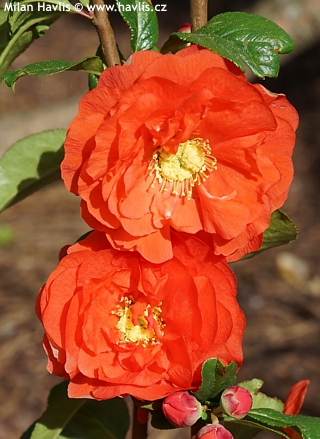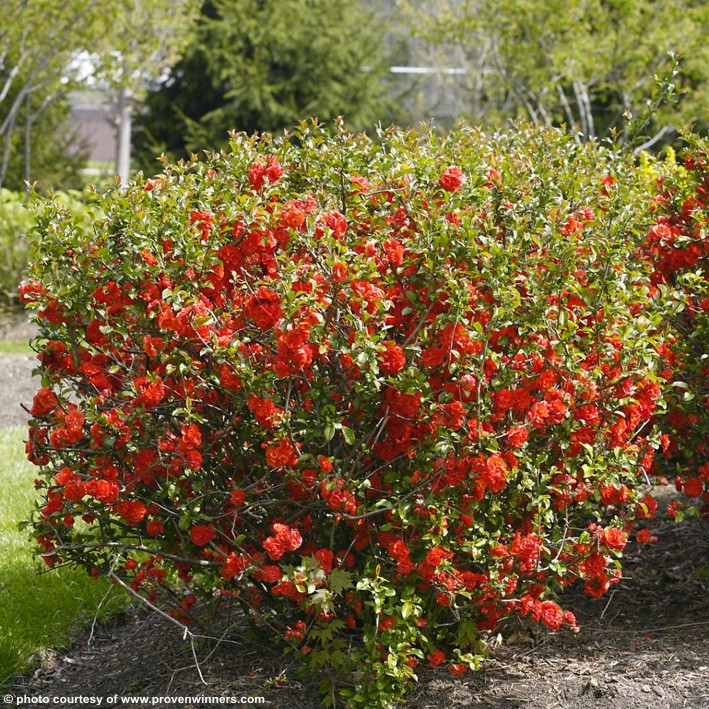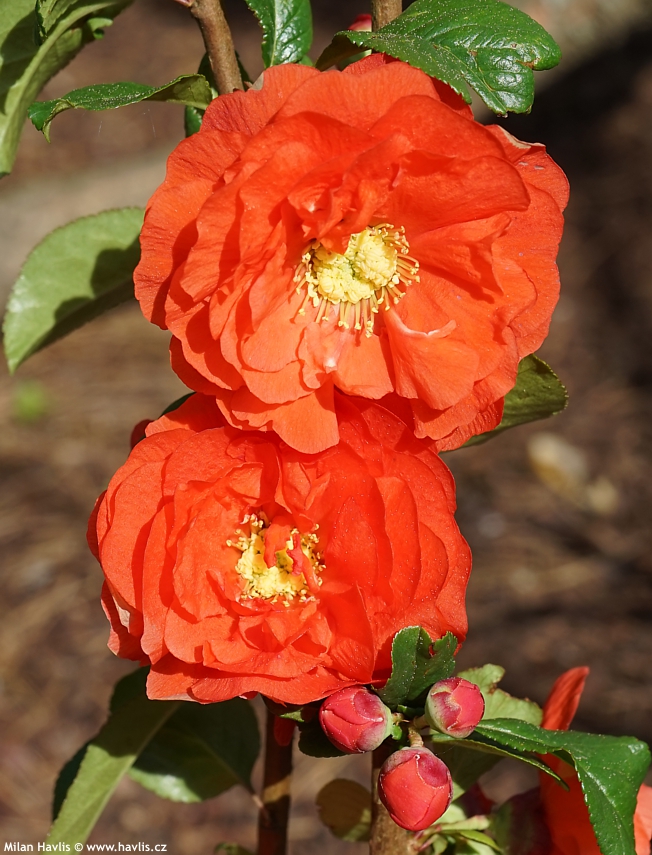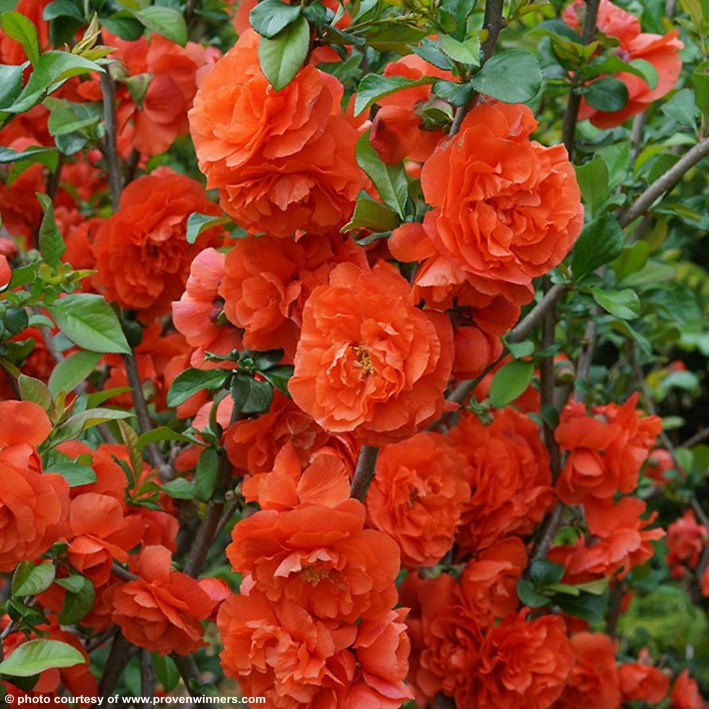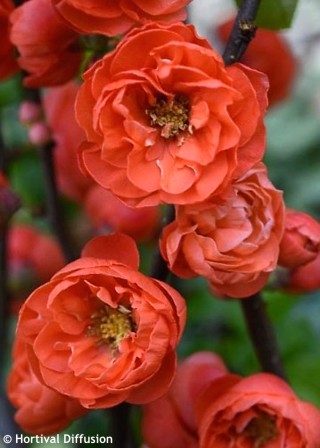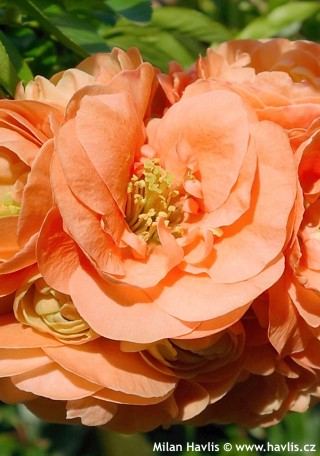Chaenomeles speciosa 'Orange Storm' DOUBLE TAKE ORANGE™ Chinese flowering quince
size/type
medium-sized shrub,medium-sized shrub
usual height
1,5-2m
usual width
1,5-2m
leaves
deciduous broadleaf
colour of leaves
flowers
showy
colour of flowers
blooming time
April-May
location
full to partial sun
soil type
neutral
soil moisture requirements
evenly moist (dislikes drought)
USDA zone (lowest)
5 (down to -29°C)
winter protection
for zone 5+6

for zone 7

categorized
Chaenomeles
Flowering quince is one of the most popular shrubs for bonsai makers. It is valued for its profuse flowering and irregular growth ideal for never-ending clipping and shaping. In Japan it is cultivated in similar quantity to flowering cherries and magnolias. It is a deciduous shrub with glossy, dark green leaves, and branches with 2-3 cm thorns, however this variety is thornless.Description of the plant:
Orange Storm is a beautiful variety of Chinese flowering quince from the DOUBLE TAKE™ series. From early spring it makes numerous, large, 4-6 cm across, fully double flowers of vibrant orange-red colour, very similar to that of Madame Galen trumpet creeper. Their 31-49 petals are elegantly arranged as in a fully double rose flower, and when the shrubs starts to flower they look like thousands of miniature tangerines hung on the branches. They commonly open in the first decade of April, however, if the winter is warm you can see numerous buds opening already in mid to late March. The shrub flowers for 6-8 weeks, and what is most interesting – it keeps small growing only about a meter tall and wide. Flowers are followed by edible, pear-shaped pomes, 4-5 cm in diameter. It is a cross between Spitfire and Draggons Blood. Pink Storm grows medium fast to fast into an upright and bushy, well rounded shrub. This variety was bred in 2008 by dr. Tom Ranney from North Carolina University, USA, i.e. the same man behind two beautiful calycanthus varieties: Venus and Aphrodite. Patent No. PP20950 was issued in 2010. All plants of the DOUBLE TAKE™ series lack thorns, and are fruitless.
Japanese quince will grow in almost any soil apart from too alkaline. For best results grow it in moderately fertile and reasonably drained garden soil, it can take clay and occasional drought when established but evenly moist soil will secure richer growth and better appearance. Pruning is crucial unless you like its natural unkempt habit. Prune the branches hard immediately after by 30-80% and remove leggy twigs from inside the shrub to achieve an airier habit with visible framework. Hardy to about -29°C (USDA zone 5) and suitable for outdoor pots.
Last update 29-10-2018
QUICK PRICE OVERVIEW
CURRENTLY SOLD OUT












